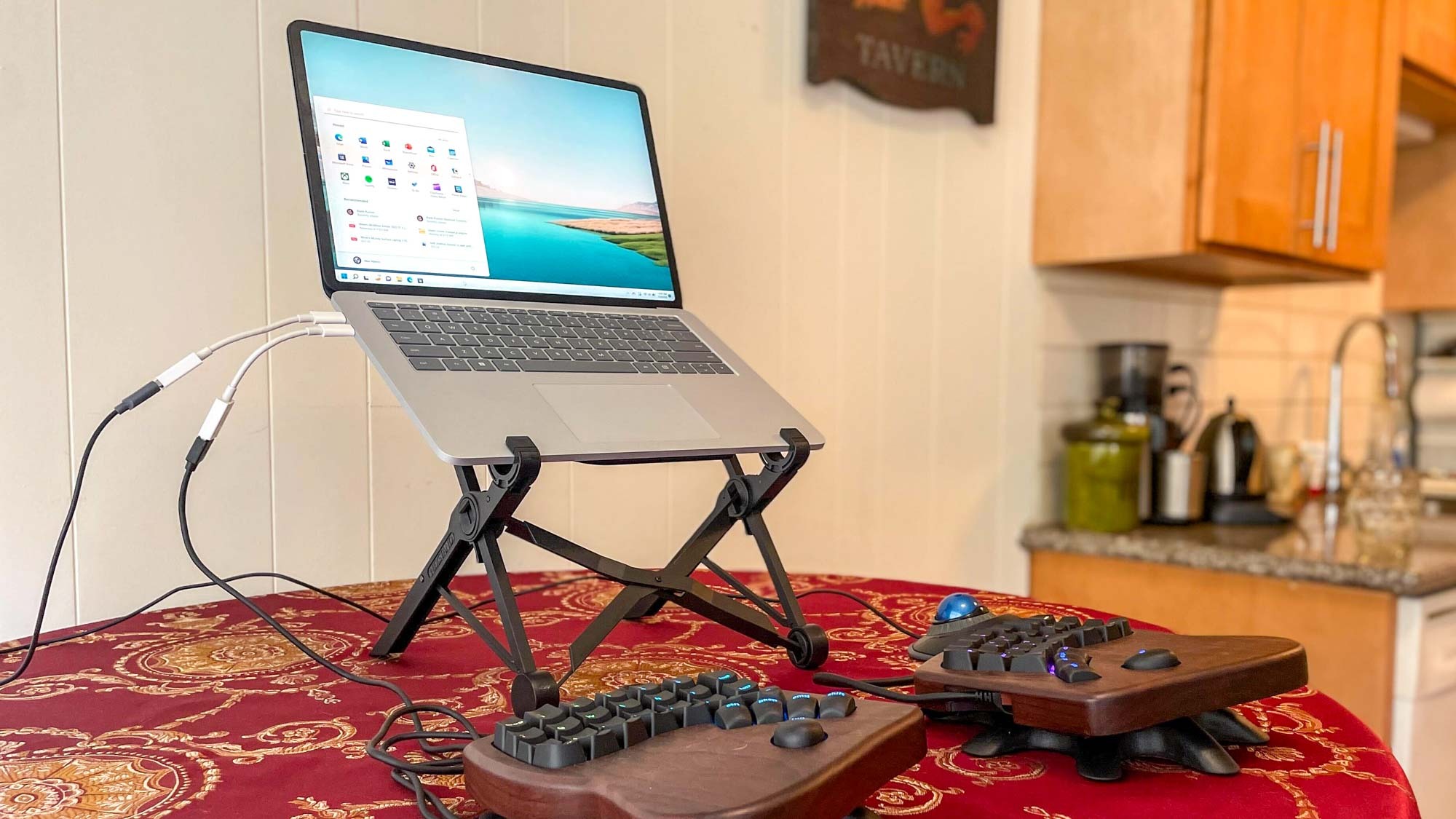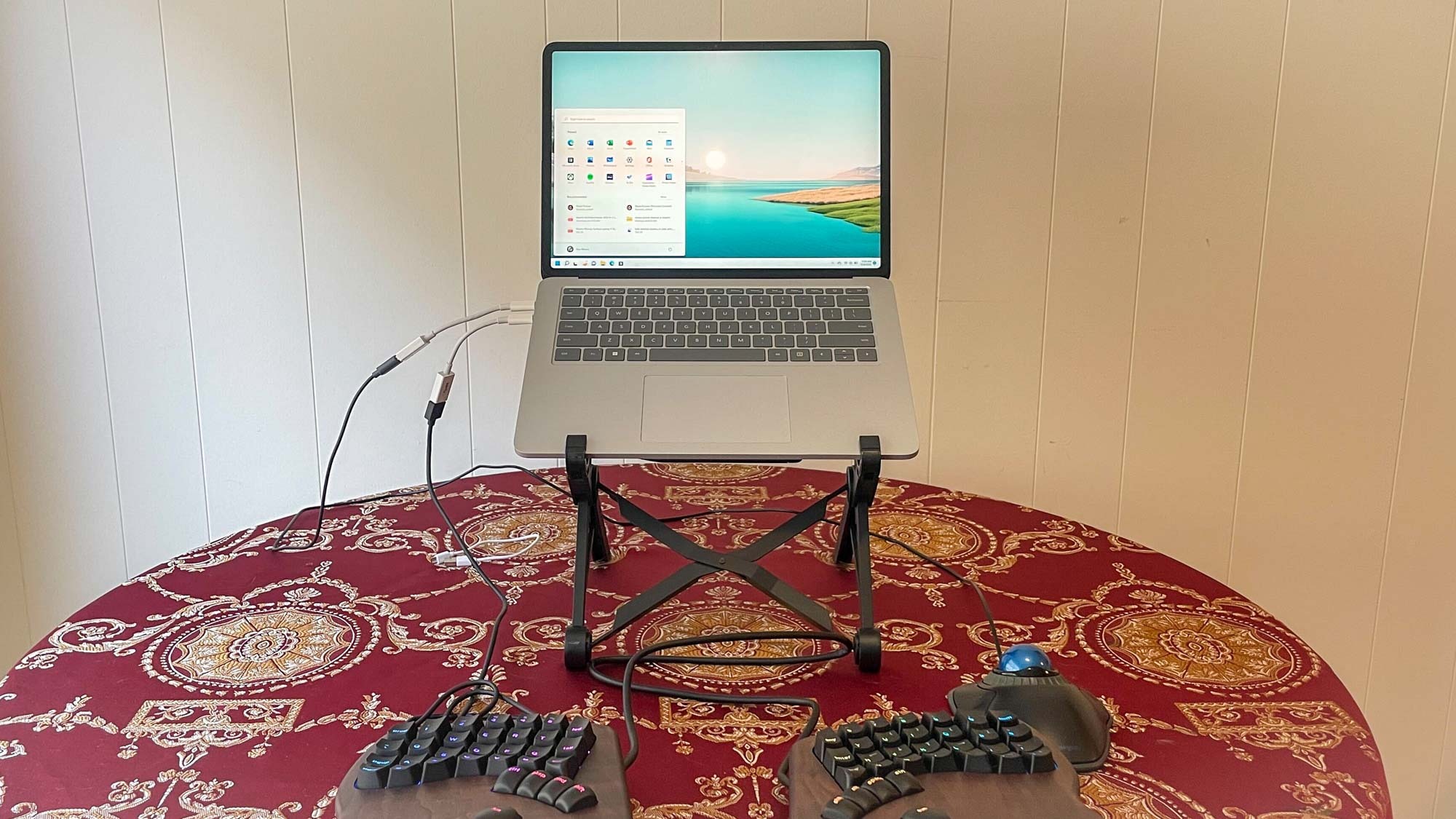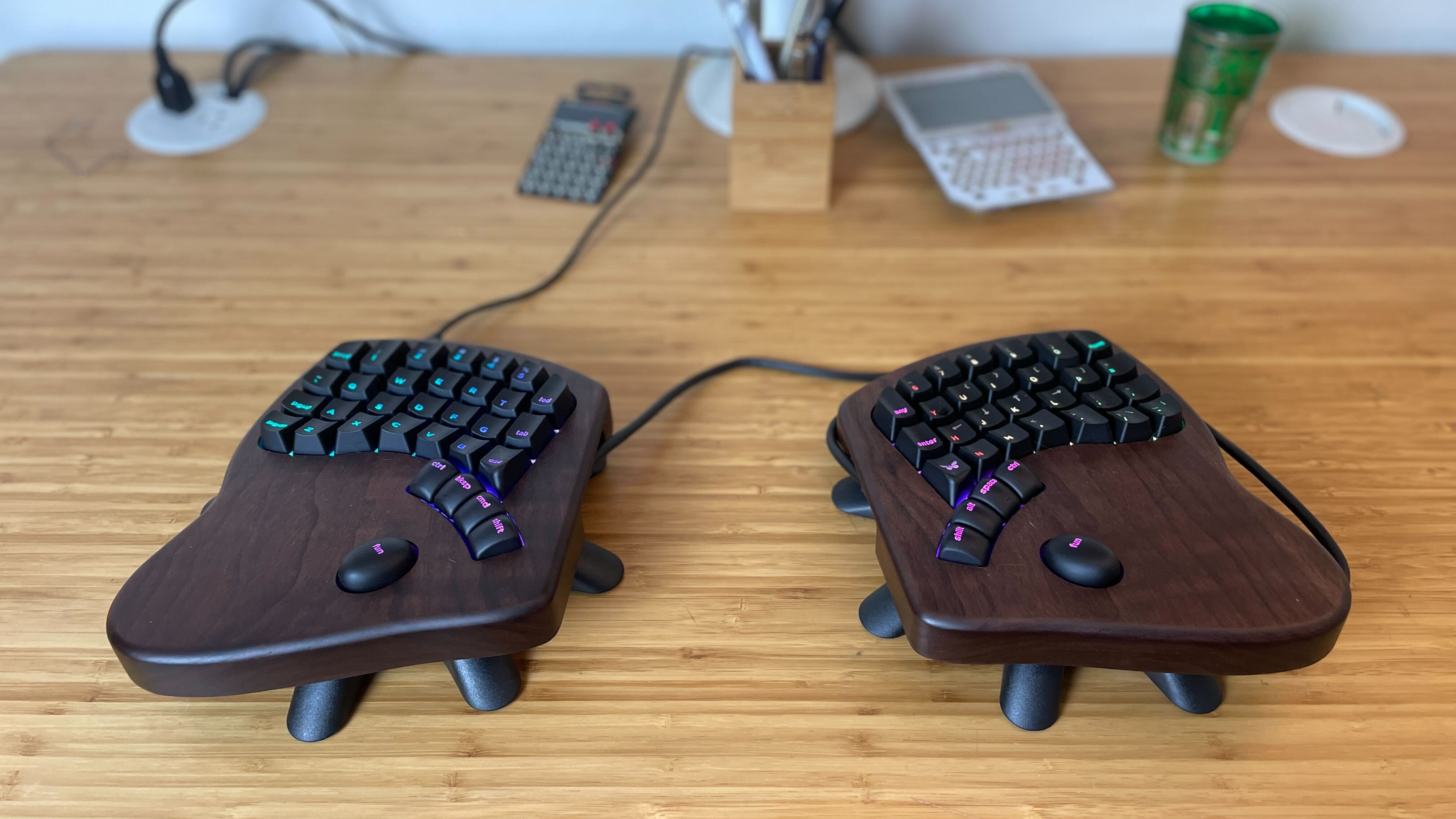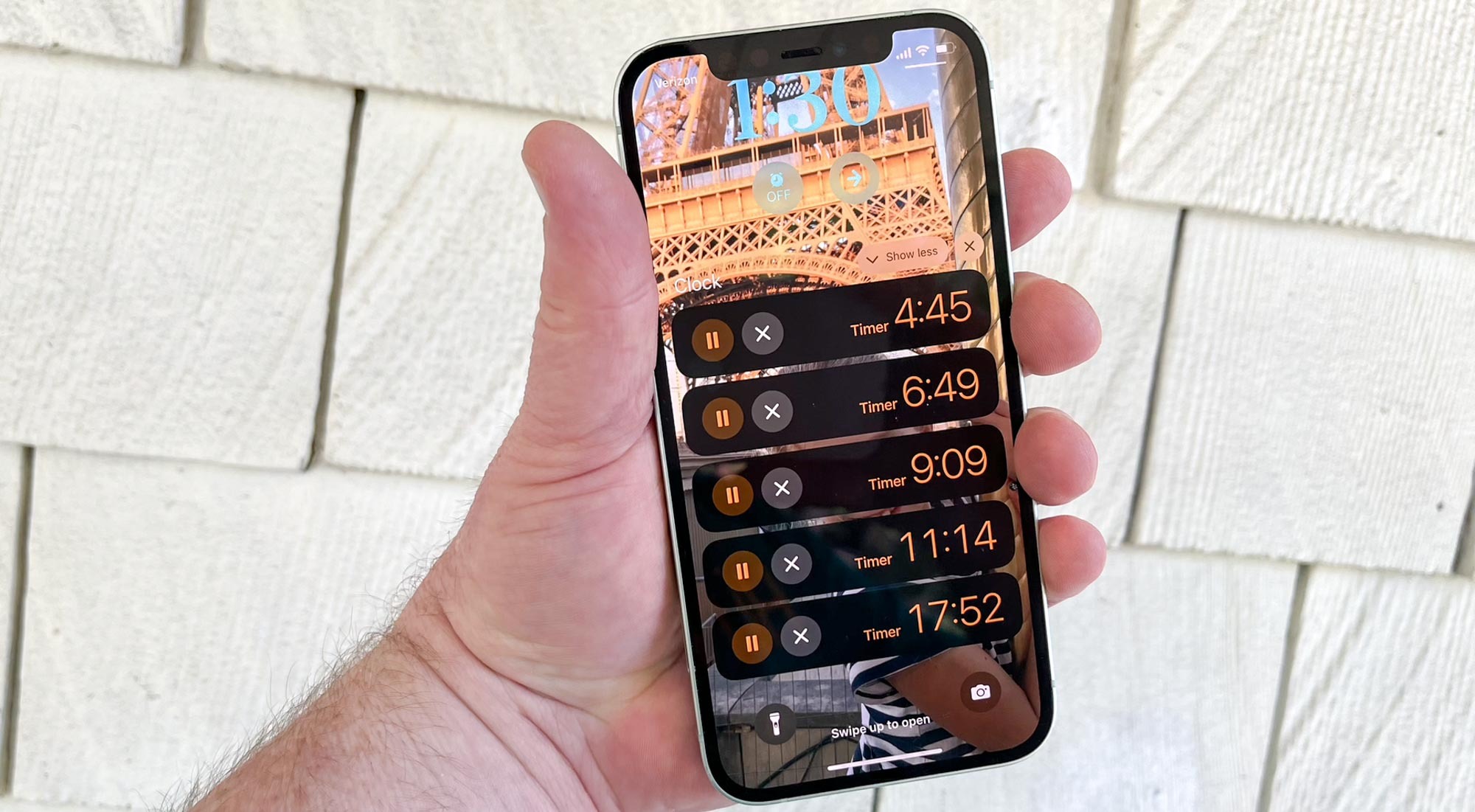
I've been a working journalist for nearly 15 years, and for me that translates to hundreds of hours spent typing on laptops. Fold in the thousands of hours I've spent clutching video game controllers over my lifetime and you get a good recipe for serious hand and wrist pain.
I know because sometime in my mid-30s I started noticing sore hands that wouldn't go away even after a good night's sleep, and within a year of that first twinge I developed an exciting assortment of aches and pains all up and down my arms.
I've had various medical professionals diagnose these issues as symptoms of RSI, or carpal tunnel, or thoracic outlet syndrome, or just plain overuse. Whatever you call 'em, the result is a lot of chronic aches and pains that developed as a result of spending long periods of time using my body in unnatural positions.
But I don't intend to give up writing anytime soon, and since I review laptops and tablets here at Tom's Guide I've had to relearn how to use these gadgets effectively without hurting myself. I've improved significantly in the past few years, but I still suffer a lot of chronic pain, and it's a little maddening to know that if I'd just been more knowledgeable and more careful, a lot of this suffering could have been prevented.
So please, don't be like me — think about the way you live and work, and even if you don't suffer any pain, give some thought to how you could be doing things in ways that are more comfortable and more natural now so you don't suffer in the future. Working on laptops tends to force us to crane our neck down for extended periods, for example, but so does doing the dishes. Anything you can do to free yourself from those unnatural positions, both at home and at work, should pay big dividends over your lifetime.
Cameron Stiehl is an experienced ergonomics expert based in the Bay Area who has done ergonomic work for clients like Cisco, Coinbase, Twitter and more. She's far more experienced and knowledgeable about this stuff than I am, which is why I'm so grateful she hopped on the phone with me recently to offer her advice on working comfortably from a laptop.

"Yes, I would highly recommend working in breaks," says Stiehl. "If you have to work on a laptop, it shouldn't be for too long of a stretch. Make sure that you're getting up, and moving away from the laptop fairly frequently."
In the wake of the COVID-19 pandemic lots of us are still working remotely at least part of the time, and that work tends to be done on laptops. If you carry one often and work from the road, I recommend these three simple upgrades — spending a bit of money on this gear upfront could easily save you years of pain and thousands in medical bills down the road.
Laptop stand
One of the first things I recommended here on Tom's Guide was this $45 laptop stand that changed the way I work, because it collapses down small enough to throw in a backpack yet allows me to elevate my laptop to (close to) eye level. Keeping your display at eye level is one of the keys to working without pain, and ever since I started using my laptop stand I feel far less pain and discomfort when working on laptops.

I was pleased to find that a laptop stand was also the first recommendation Stiehl made for working on a laptop with less pain. You can get a collapsible one like mine for travel, or you can get a nicer, more premium model for use at home — we have a number of picks on our list of the best laptop stands — but the key is to get one that lets you adjust the height of your laptop screen to your comfort.
"It's important to have a laptop riser," she said. "If you're going to use it at home, and you don't have to move it around so much, there are nice sturdy ones that can stay on your desk that work really well, but the key thing to look for is adjustability ... adjustability, adjustable height is super important. If you're 6' 3" and I'm 5' 9", we're going to need a slightly different height, right?"
Ergonomic keyboard and mouse
The next thing worth investing in is a quality ergonomic keyboard and mouse you can use with your laptop. I used to have nothing but respect for the classic rectangular QWERTY keyboard, but that's all gone now. Now that I've spent years trying to unlearn the unnatural, contorted shape my hands have to assume to type on these key-studded slabs of misery, and I much prefer using my Keyboardio Model 100 ($349), an ergonomic mechanical keyboard that's split into two halves.
I find these kinds of split keyboards much less painful to use because you can move each half to wherever your hand is most comfortable, and the Keyboardio has a nice curve to the keys that feels good under my fingers. You can read about how this keyboard transformed how I work, but even if you're willing to shell out $350 for a keyboard, this might not be the best fit for you — remember, every body is different, so you might want to try and get your hands on a couple different keyboards to see which one feels best before you buy.

The same goes for the best mice, though you will want to try alternative designs like vertical mice or trackball mice just to see if they're more comfortable — this rundown of which ergonomic mouse to buy might give you some good places to start, but ultimately anything you get that gets you away from hunching over your laptop and clawing your fingers over the trackpad is probably a good thing.
"There's a million different kinds of portable keyboards and mice out there. I have a few favorites that I like, but anything is better than just using the laptop alone," says Stiehl.
"There's one keyboard I'm starting to recommend more, the GoldTouch Go," she adds. "It's a split keyboard that's portable, and small and sleek. And it's got a switch on it that changes it from PC to Mac, so anybody can use it. It folds in half, it's basically two little squares of keyboard, you can set it in any kind of split angle that you need to even tented if you need that to keep the arms, full pronation. But even fold it in half and throw it in the bag. It's so easy. And so like, no reason not to use it!"
Timer
Finally, take breaks! One of the biggest things that has helped me get over my chronic hand and wrist pain is taking regular breaks every 30 minutes to stretch. Even if you're not (yet) in pain, I highly recommend you do the same if you can — some of us aren't lucky enough to work in places that allow regular breaks, but they're key to long-term health.
I like to use the old Amazon Echo Dot I have in the kitchen to run 30-minute timers for me while I'm working, but you can use whatever is easiest for you. When I'm traveling I sometimes like to carry a cheap little egg timer with me, just to remind me to take breaks, but you don't even need to bother — just use your phone.

"We all have timers with us on our phones, so just set a timer for 20 minutes and then take a break when that goes off," recommends Stiehl.
"The amount of time that we spend on any device, laptops especially, makes a big difference. So I would highly recommend working in breaks. If you have to work on a laptop, it shouldn't be for too long of a stretch. Make sure that you're getting up, and moving away from the laptop fairly frequently. If people are going to work for nine hours straight on a laptop, they're going to get hurt."
You may not be planning to put in a nine-hour stint on the laptop today, but if you're anything like me you probably spend a lot longer hunched over a keyboard than you'd care to admit. Now that I've done too much of that I immediately start to feel it when I'm in an unhealthy computing position, but don't wait for the pain to start to do something about it — by then it could be a lot more painful and harder to deal with.
So if you work from a laptop or PC regularly, pay attention to your body and how you feel while working. If you're tired or uncomfortable, do something about it. If you're regularly feeling fatigue and muscle tension in the same areas when you work, that can be a good warning sign that you need to do something about it.
"I think that the early signs to look for are like tension, especially neck and shoulder tension, or fatigue. If your wrists are getting tired, like your hands feel tired, by the end of the day, it may mean that there's something kind of coming on," adds Stiehl. "Those are the really the big things, the fatigue and the muscle tension. Because by the time it gets to an actual discomfort, or like numbness and tingling, there could be some real damage done. But if you catch it early enough in the fatigue and mild discomfort tension kind of stage, it's easier to unwind."
As someone currently undergoing the painful, expensive, multi-year process of unwinding a lifetime of bad posture and too much screen time, I beg you: Don't ignore good ergonomics in your daily life. I promise, your body will thank you!







